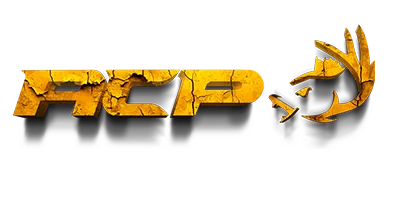John Barsness on the TORIC 10×42 Binocular
John Barsness on the TORIC 10×42 Binocular
John Barsness on the TORIC 10×42 Binocular. This article originated in Rifle Loony News.
The optics market keeps getting more crowded. One of the new companies is Tract Optics, recently started by Jon LaCorte, who worked for Nikon for many years, where I got to know him. One of the major differences between Tract and most other optics companies is their products are sold only through their website, www.tractoptics.com, bypassing the traditional layers of retailing–including wholesale distributors and their sales representatives, and on-line or brick-and-mortar stores, each of which takes their cut of the eventual price to the consumer. The Tract system results in considerable savings to hunters desiring high quality optics.
TORIC 10×42 Binocular
A good example is Tract’s top-of-their-line Toric binoculars. I requested a 10×42 for testing, partly because I prefer 10×42’s for all-around hunting use, and partly because of my Swarovski EL 10×42, used as a base-line for optical performance. Binocular comparisons are truly valid only when comparing the same size binoculars, both in magnification and objective-lens diameter. Comparing an 8×30 to a 10×42 isn’t as impossible as comparing apples to oranges, but is kind of like comparing Galas to Golden Delicious. They’re different kinds of apples.
When making comparisons I use a pretty long check-list, including such optical basics as brightness in dim light, chromatic aberration, accuracy of color rendition, and fuzziness around the edge of the field of view. Then there’s how close the binocular can focus, usually far more important to birdwatchers than hunters, but the list also includes mechanics, including ease of focusing, eyecups, any perceived mechanical slop (including how well the binocular stays in focus), and the diopter adjustment, used to compensate for the slight differences often found in a pair of human eyes.
Weight and size TORIC 10×42 Binocular
There’s also weight and size. A lot of hunters think very small, light binoculars are more desirable—and they are, if you’re one of those hunters who only looks at stuff they’ve already seen. But when seriously glassing for details invisible to your naked eyes, say a deer’s antler sticking out of a bush half a mile away, more weight can help steady the view, especially with the higher magnification that makes serious glassing possible.

So I went through my checklist, directly comparing the Toric and EL. Not surprisingly, the Swarovski came out slightly ahead in most optical categories, but wasn’t any sharper, and neither binocular showed any visible trace of chromatic aberration—the fringe of blue or purple color around the edges of objects, due to the lenses not focusing different light-rays exactly the same. Edge-fuzz was just about the same, so minimal nobody would notice it unless really looking, as was field of view.
The only optical category where the EL really beat the Toric was close-focusing, but both focused on objects far closer than any hunter would be interested in unless they’re also butterfly watchers. The EL’s is listed at about five feet and the Toric about eight, but the test Toric focused at seven feet. Both have dust/oil/water resistant lens coatings that work very well.
The Toric required only ¼ turn of the focus wheel to go from 12 feet to infinity, the EL about 1/3 of a turn—but the Toric’s focusing was noticeably firmer, so is more likely to stay focused in the field. The EL’s diopter adjustment is included in the focus wheel: You pull the wheel back slightly to unlock the diopter, and after adjustment, push the wheel forward to lock it. The Toric uses the more common diopter-ring on the right eyepiece, which costs less to produce. Like the focus wheel, it adjusted firmly yet smoothly.
The EL has two slim hinges between the barrels, one at the front and one toward the rear, holding the focus wheel. The Toric has a single “piano-cover” type hinge, two inches long. Usually slimmer double hinges save weight over a piano hinge, but the Toric weighs a couple ounces less than the EL, a binocular known for its relatively light weight, and the Toric’s also noticeably smaller in overall size.
Binoculars are rubber-armored with a nubby finish
Both binoculars are rubber-armored with a nubby finish, making them easy to hold and control even in sweaty hands. The Swarovski has twist-turn eyecups with three click settings; the Toric’s have four settings. I’d rate the mechanics of the Toric slightly ahead of the EL’s, though both binoculars work very well.
Now we come to what many hunters consider most important, the price. Right now the 10×42 Toric can be ordered for $626, which includes free UPS ground shipping. The 10×42 averages around $2600 from various websites, and that normally doesn’t include shipping. Many hunters consider Swarovski binoculars the best in the world, and I certainly won’t argue with them—but many hunters also can’t afford Swarovskis. But most of us can afford a Tract Toric.







